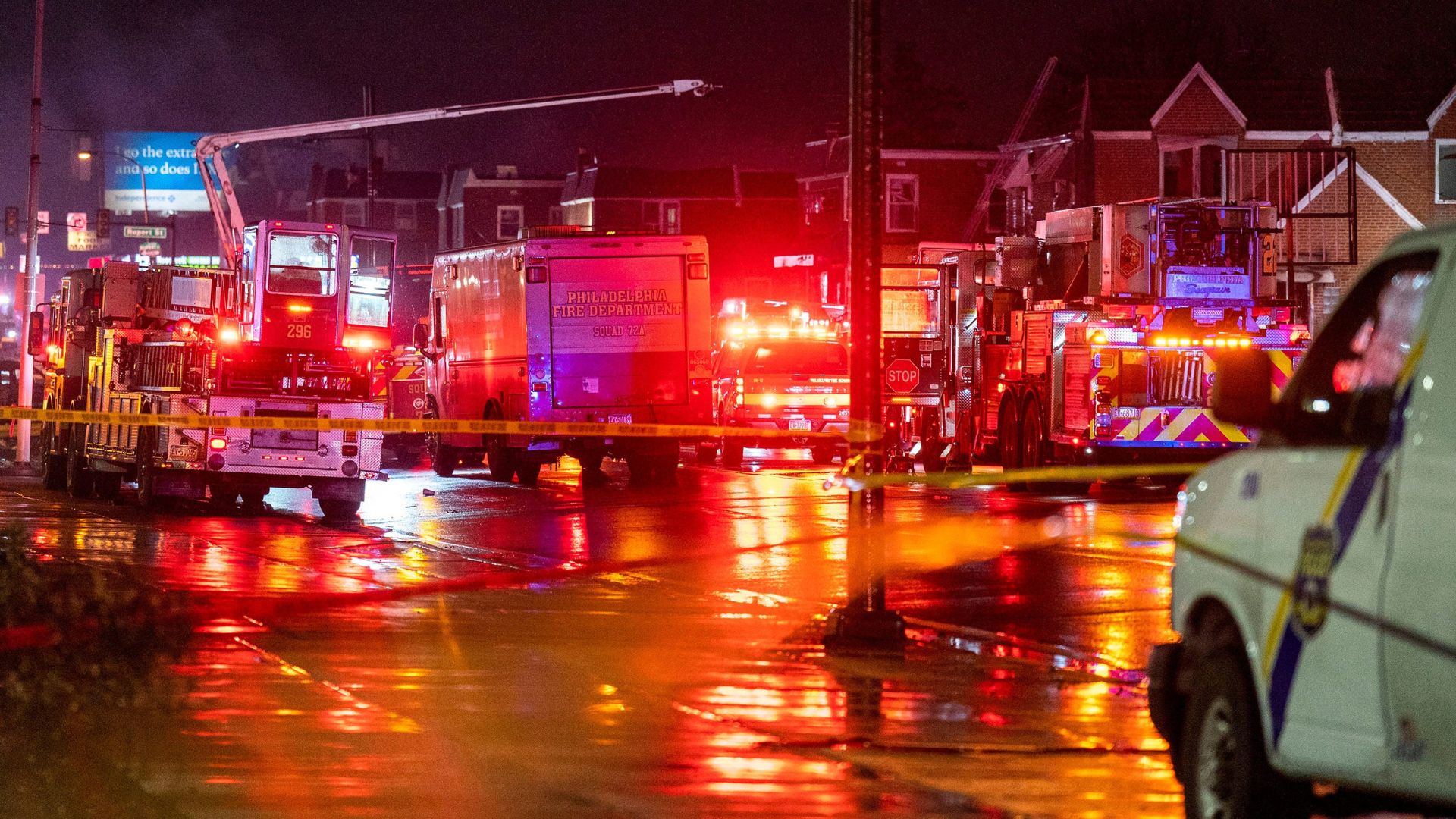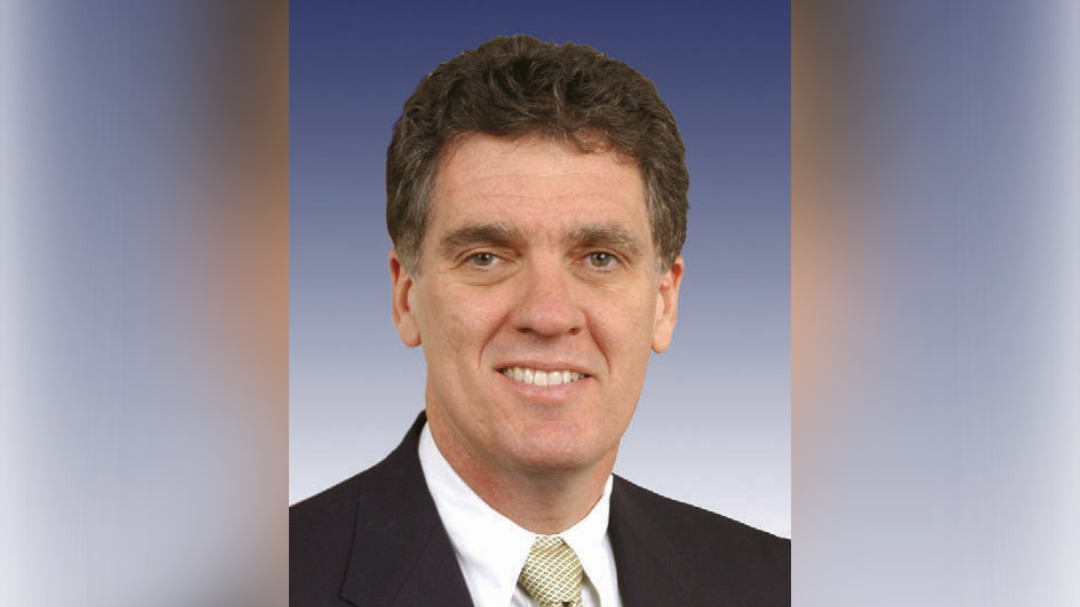A small medevac jet, a Learjet 55, tragically crashed into a Philadelphia neighborhood, resulting in a fiery explosion and the loss of six lives. The aircraft was on a mission to transport a young girl home to Mexico after she received treatment at Shriners Children’s Philadelphia. It took off from Northeast Philadelphia Airport, heading to Springfield-Branson National Airport in Missouri, but crashed around 6:30 p.m. not far from its departure point.
The crash site was just three miles from the airport, near Cottman Avenue and Roosevelt Boulevard. Domingo Colon and his wife were just stepping out of their home in Northeast Philadelphia when they heard the jet descending. Colon’s Ring camera managed to capture the sound of the aircraft soaring down several blocks away until it vanished behind nearby townhouses.
Moments after disappearing from view, the jet exploded into a massive fireball, lighting up the night sky. Philadelphia resident Chris Andro was driving along Roosevelt Boulevard towards Cottman Avenue when he witnessed the spectacular blaze. His dashcam recorded the scene, and he could be heard reacting in shock, questioning if the event was being captured on video.
The unfortunate jet carried six individuals onboard: the young patient, her mother, a doctor, a paramedic, and two pilots. All were Mexican nationals, as confirmed by Mexico’s Ministry of Foreign Affairs. On the ground, at least six people sustained injuries and were promptly taken to local hospitals.
Out of the injured, three have already been discharged, while three others continue to receive treatment at Temple University Hospital’s Jeanes Campus. Authorities are actively investigating the cause of the crash, although initial reports suggest there were no distress calls before the accident. This disaster followed closely on the heels of another tragic event involving an American Airlines regional jet and a military Black Hawk helicopter near Reagan National Airport.
Just two days prior, American Airlines Flight 5342 collided with the helicopter while approaching Runway 33, leading to a deadly midair collision. The flight, carrying 64 passengers, and the three soldiers aboard the helicopter are all presumed dead. These back-to-back incidents have sparked serious concerns about aviation safety across the country.
Federal investigators are now examining both crashes with increased scrutiny, hoping to uncover any underlying issues. The aviation community and public alike are eager for answers to prevent such tragedies in the future. The proximity of these incidents in time has brought a heightened awareness and urgency to addressing potential safety lapses.
As the investigation unfolds, families of the victims are left grieving and seeking closure. The loss of life in such dramatic circumstances has a profound impact on communities, both locally and internationally. It’s a stark reminder of the inherent risks associated with air travel, despite its everyday nature.
In the wake of these crashes, calls for improved safety measures are gaining traction. There is a growing demand for advancements in technology and protocol to ensure passenger and crew safety. Conversations around these issues are likely to continue as more information becomes available.
The National Transportation Safety Board (NTSB) is leading the charge in piecing together the events that led to these crashes. Their findings will be crucial in shaping future safety regulations and practices. The aviation industry must adapt and evolve to prevent similar tragedies from occurring.
While the investigation is ongoing, support for the victims’ families has been pouring in from around the globe. Communities are rallying together, highlighting the resilience and solidarity of people in times of crisis. This tragic event underscores the importance of preparedness and crisis response.
As more details emerge, the hope is that lessons learned will lead to meaningful changes. The goal is to enhance safety standards and reassure the public about the security of air travel. The path forward involves collaboration among various stakeholders in the aviation sector.
In the meantime, the focus remains on unraveling the mysteries behind these incidents. Investigators are meticulously examining every piece of evidence to draw accurate conclusions. The collective effort aims to honor the victims by ensuring their loss leads to positive outcomes.
The aviation industry, known for its stringent safety standards, is under pressure to maintain and exceed those expectations. These incidents serve as a catalyst for innovation and improvement. The ongoing commitment to safety will remain paramount in the minds of travelers and professionals alike.
This tragic series of events highlights the delicate balance between technology and human oversight. It serves as a reminder of the complexities involved in modern air travel. The journey towards enhanced safety is one that requires vigilance and dedication from all parties involved.
Through these challenges, the resilience of those affected shines through, offering hope for a safer future. The aviation industry is poised to learn and grow from these experiences, driven by the shared goal of preventing further loss. Such tragedies, while devastating, can inspire positive change and progress.
As investigations continue, the aviation community is reminded of its responsibility to passengers and crew. Ensuring the safety and security of every flight is a commitment that must be upheld. The lessons from these incidents will undoubtedly shape the future of air travel, with safety as the ultimate priority.



